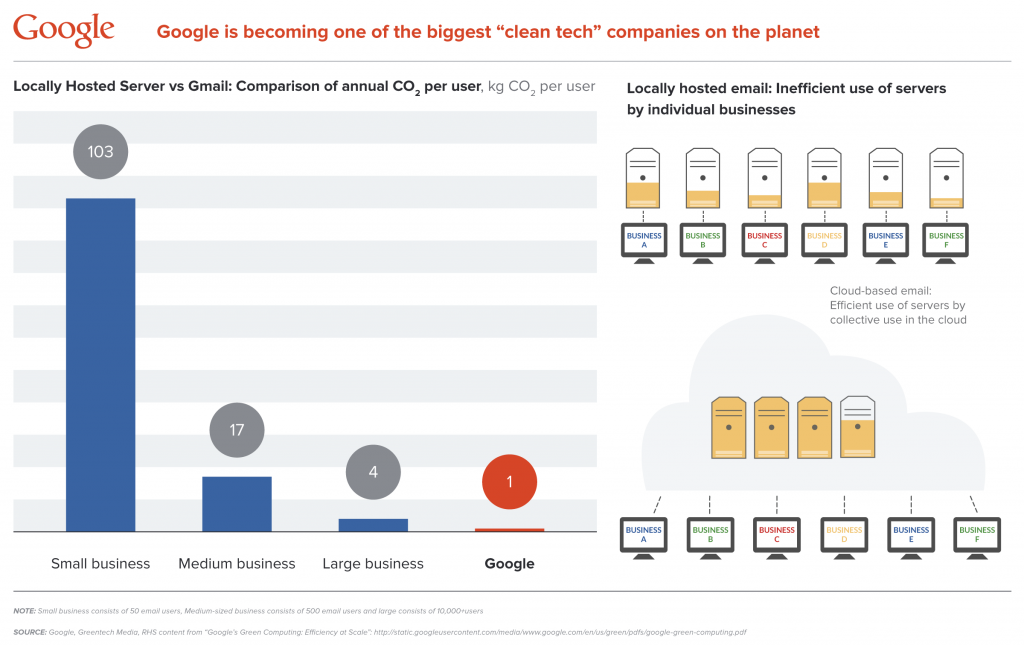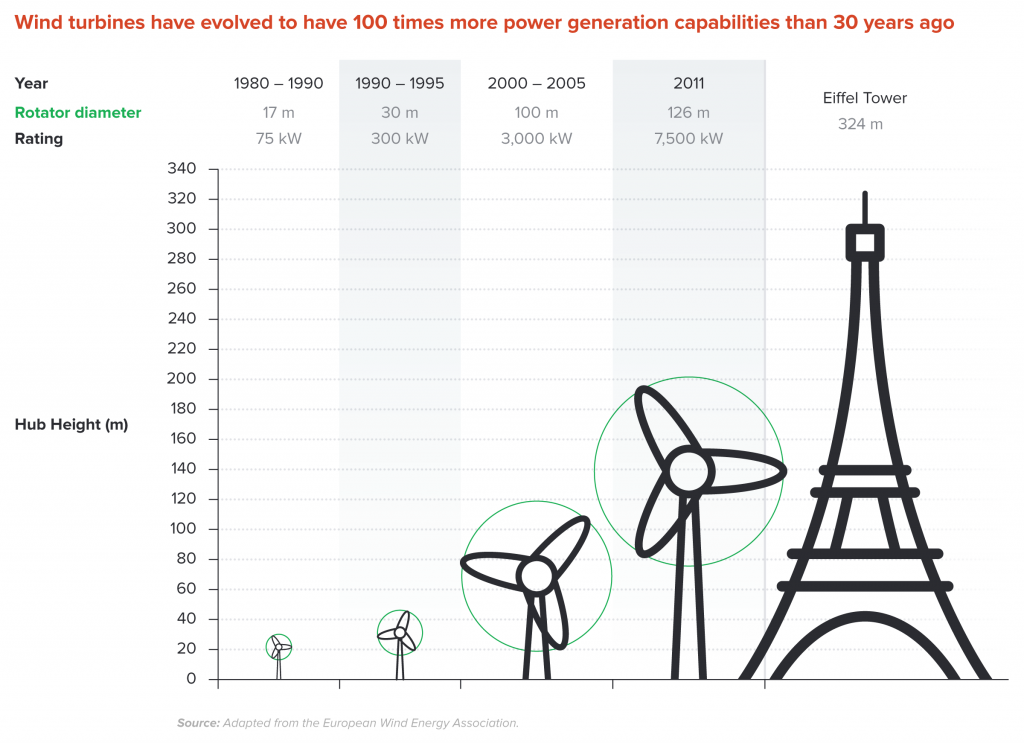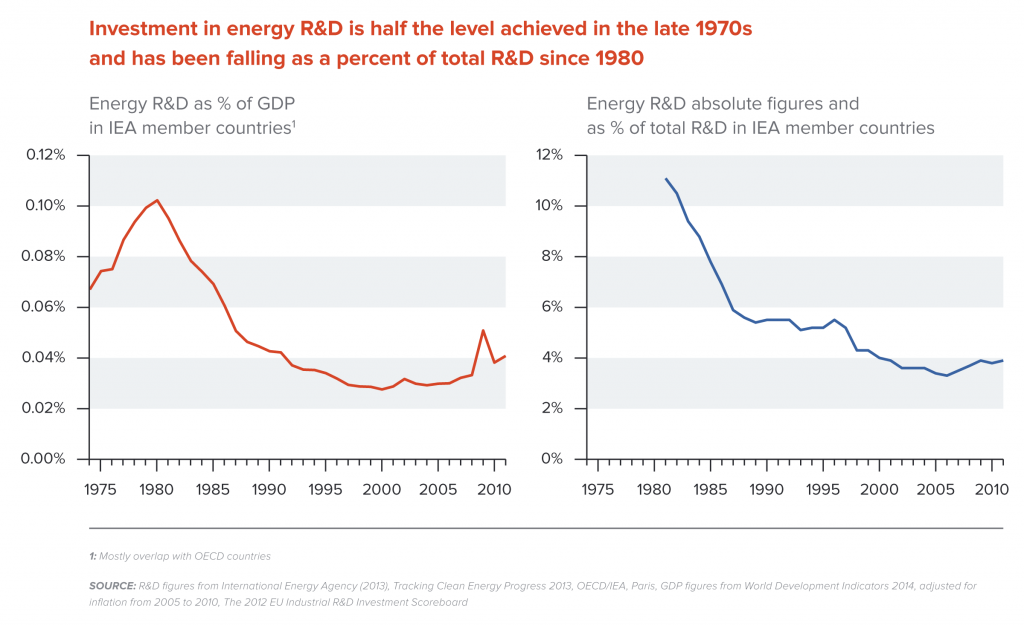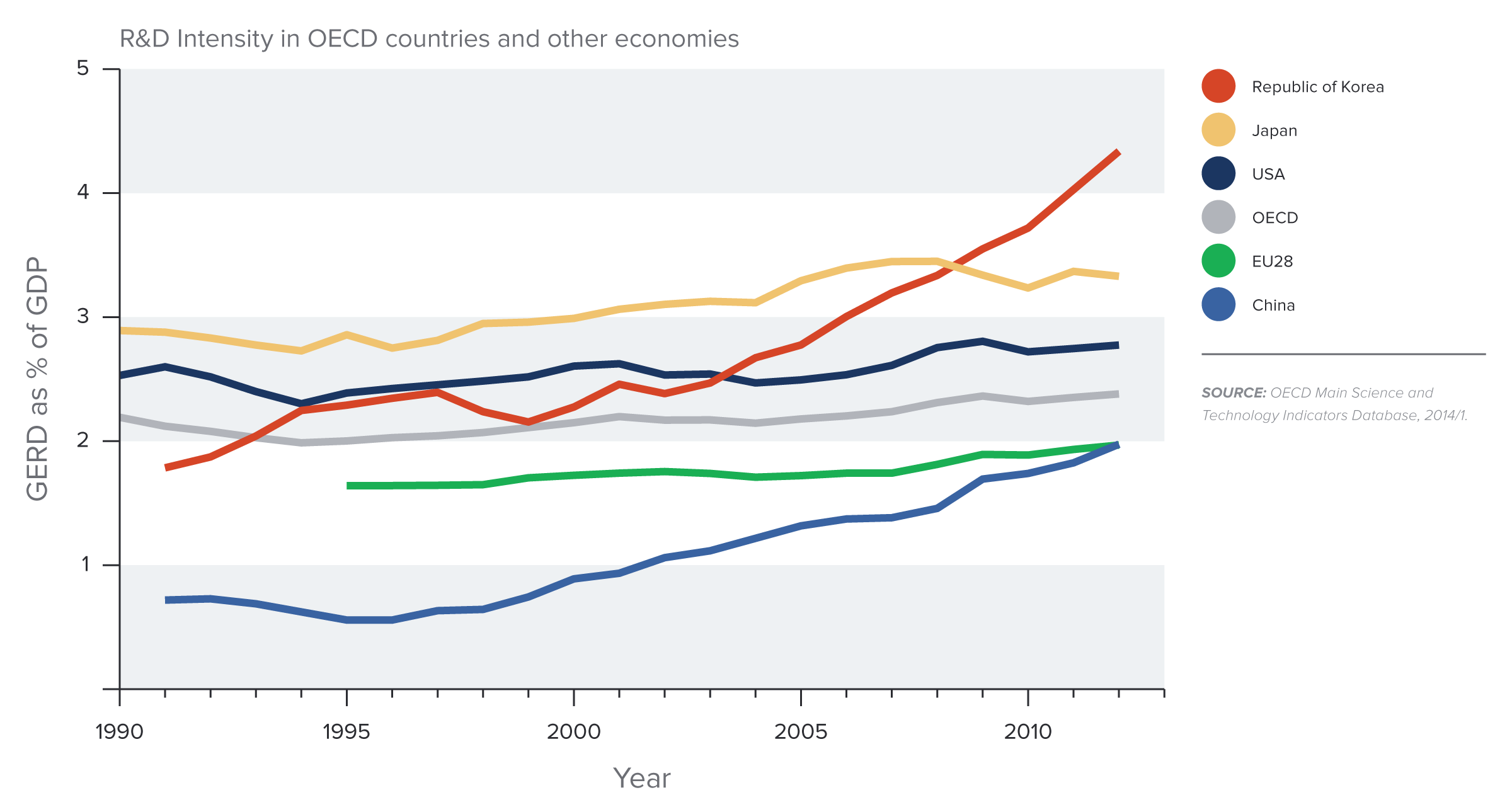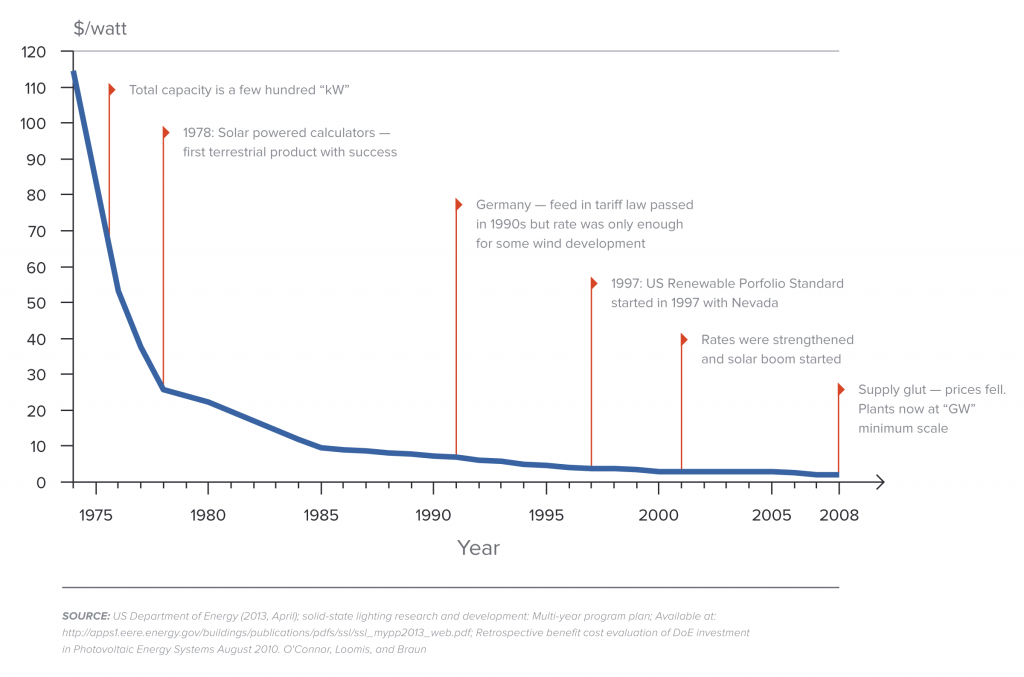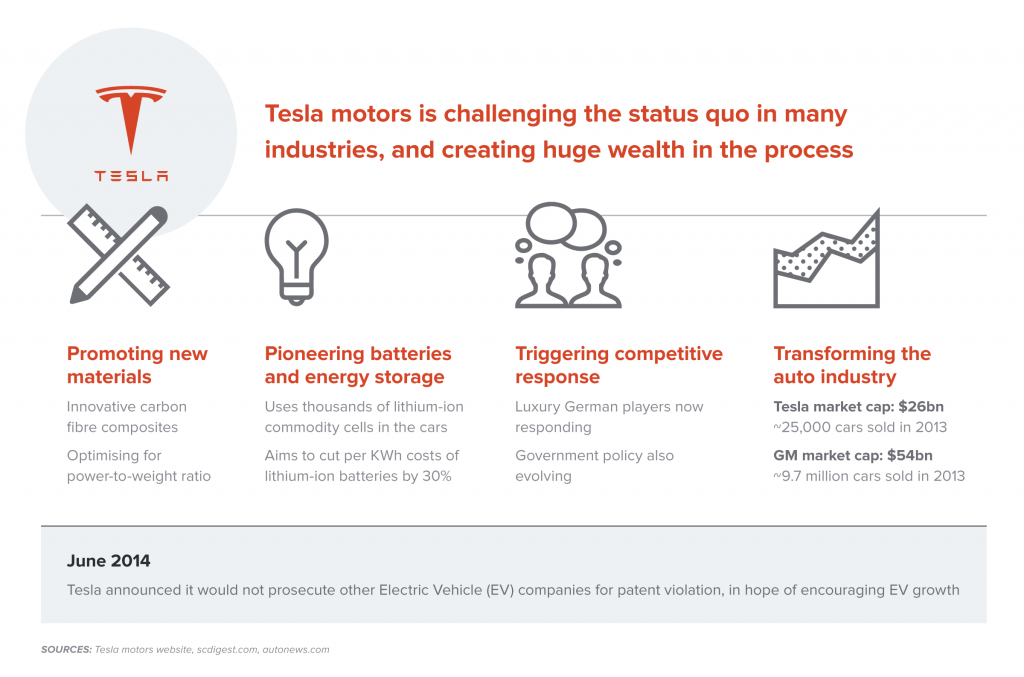Innovation is agnostic. No matter how much potential there is for innovation to advance the low-carbon transition, it will not necessarily do so – not on its own. The application of new technologies, and the innovations that they spawn, are driven by a number of factors, primarily market demand for goods and services benefitting from those innovations.
Where the current wave of innovation has the strongest impact will be determined by two key factors: market demand and public policy. This section examines these two factors, with a focus on identifying and removing barriers to innovation.
Identifying barriers to low-carbon innovation
As discussed in the economic policy and energy chapters, to ensure our markets work efficiently, it is crucial that prices reflect the true costs of carbon and other environmental damages. Economic research shows that if these costs are not accurately reflected, investment in low-carbon technologies is likely to be lower than what would benefit society most. 33 Industry consultations by the Commission indicate a broad agreement that a strong carbon price or an equivalent policy that prices emissions would greatly accelerate the application of new technologies and new business models to low-carbon applications. 34 We discuss this further below, but first we examine several other kinds of barriers that inhibit low-carbon innovation.
Generally speaking, innovations enter the economy in a continual and iterative process encompassing “invention” (the creation and development of innovations) and “diffusion” (the adoption of new, innovative products and services across the economy, often replacing old ones). 35 Different obstacles and constraints arise at different points of the process.
The invention process is constrained by the fact that the value of innovations is often difficult to protect, and becomes, to an extent, widely accessible. While a technological solution, such as the formula for a new drug, can be patented, such patents can be difficult or prohibitively costly to exercise. And new business models can be copied with little payoff to the original inventor. At the same time, knowledge about, and the ability to replicate, a new technology or process can also be transferred as individuals move from one company to another.
These spillover effects may be positive in terms of rapid diffusion of innovation, but they may also make businesses and financiers reluctant to invest, as the value of that innovation is difficult to protect. This market failure leads to lower-than-optimal levels of innovation. 36 Intellectual property rights are an important tool to protect innovation and create incentives for investment, but they also suffer from inherent disadvantages. We turn to this later in this chapter.
The diffusion of innovation, critical to reaping its economic benefits, involves companies and households purchasing new equipment, learning new ways of doing things, or adapting their existing capital to new business models and processes. This process can be hindered by an array of market failures, most notably – but not only – the failure to accurately price environmental damages and other externalities.
Market failures can hinder the uptake of innovations in several ways. For example, the success of many technologies depends on their widespread adoption. So while everyone would benefit if they all moved to the new technology, nobody has an incentive to be the first to adopt an untested technology. So-called “dynamic increasing returns” emerge gradually, 37 as early adopters are observed and copied by others, until the “learning-by-using” effect is substantial and adoption becomes widespread. This means that, absent some intervention, the adoption of such technologies would be slower than optimal. An example is smart meters, where both the effectiveness and cost of the technology depend on creating a large user base and leveraging learning-by-using effects.
Related to this, achieving network economies can also be a challenge for new technologies that require new infrastructure and a critical mass of users. Government plays a key coordinating role as rule-setter. Just as governments help ensure the interoperability of electronics, requiring that different systems be compatible, they also need to set standards for new technologies and their associated infrastructure, such as electric vehicle (EV) charging and solar panel integration. EVs’ market success, for instance, depends on having a strong network of charging stations; without a large EV user base, however, there is little incentive to build charging stations. If multiple companies build incompatible networks to charge cars, this exacerbates the problem and further inhibits the growth of the network. Mandating that charging stations all follow the same technical standard will speed the rate of network growth.
Another market failure relates to financing innovation. Information on new technologies is, by definition, scarce, and held primarily by the creator. This can lead to underinvestment in the adoption and diffusion of the new technologies, as investors may find it difficult to understand the new technology, and if they do finance it, they are likely to charge a premium. The added cost, in turn, will further reduce investment.
Misaligned incentives can similarly inhibit profitable investment in new technologies. For example, building owners are often not the ones paying the electricity bills, so they have few incentives to invest in equipment or insulation to reduce costs for their tenants.
In the context of environmental issues, and in particular GHG emissions, these general barriers to innovation are exacerbated by the uncertainties and lack of understanding surrounding the future impact of climate change. Even if we were to introduce a strong carbon price, uncertainty about the nature and magnitude of damages, about future policy responses, and about the nature of the untested technologies, would make investors reluctant and financing more expensive. 38
Barriers to entry, such as regulations favouring incumbent industry, also inhibit new technologies. Government plays a key role in helping to reduce these barriers. Incumbency is powerful – the combination of capital invested (sunk costs), technology maturity, and outdated policy frameworks delay adoption of new technologies and business models. These barriers to entry appear to be entrenched in the global energy system, where new energy technologies can take over 20 years to achieve a 1% penetration rate. 39
The discussion above makes it clear that while pricing carbon and other externalities is crucial to unleashing the power of markets for a low-carbon economy, other measures also play a role in ensuring that investment in innovation flows to low-carbon technologies at the pace and scale that is optimal for the economy. The next section looks at potential solutions to these issues.
Fixing market failures to enable innovation and direct it to the low-carbon economy
Innovation and the incentives around it are best understood in the wider context of industrial policies. Thus, any measures to address and correct the market failures discussed above should be seen as critical components of overall policies for growth. The potential interventions fall into three broad categories, which we will discuss in this section:
- Support for research and development (R&D), including publicly funded basic research and links between public research and the private sector, to ensure the research remains relevant to market demand;
- Building market demand for the new technologies through pricing mechanisms, regulatory standards or direct procurement;
- Ensuring strong and fair competition through anti-trust and intellectual property regimes that protect the value of innovation and shape the diffusion of innovation.
Support for research and development
Historical analysis of innovation across several sectors indicates that commitments to support a specific type of innovation must be long-term in order to succeed. There is broad agreement that government has a role in supporting nascent technologies through R&D, as benefits often accrue to all of society, rather than just investors. This is particularly true for early-stage technologies, where they may have widespread applications. The economist William Nordhaus found that R&D can have a social return on investment of 30–70%, compared with private returns of just 6–15%. 40
Governments’ key role in R&D has been understood for decades, if not centuries. AT&T’s first solid transistor, though developed by the private sector, was the outcome of decades of public spending on preparatory research in the 1950s. Similarly, the development of the internet was based on US federal funding in the 1960s, with no real expectation of a commercial application. Much high-risk, high-reward R&D has come from governments, and has paid high dividends to society. The economist Marianna Mazzucato notes that 75% of breakthrough drugs are funded by the US National Institutes of Health, and most of the key components of the iPhone grew out of government-funded research.41
Public support for R&D can take a number of forms, including direct vs. indirect methods, and grant- vs. investment-based. It can also take place at various points in the R&D process (from experimental research to large scale demonstration), and can involve public, private or other non-government actors, or consortia of different actors.
Direct, grant-based funding includes direct support for science, engineering, and other innovation-related education programmes. It includes direct financing of national labs, along with their R&D facilities and researchers. It also includes direct funding for individual R&D projects, as well as support for the creation of R&D networks across the public and private sector, and across academic researchers and commercial entities. In some cases, countries even provide direct grants as seed funding to start-ups.
Additional, often lower-cost, options for indirect support include orchestrated international knowledge-sharing and outcome-based competitions. For example, the Grand Challenge for driverless vehicles 42 and the Robotics Challenge, 43 both sponsored by the US Defense Advanced Research Projects Agency (DARPA), have spurred big improvements in these nascent technologies.
Finally, countries can utilise investment support mechanisms for R&D activities. These may include venture capital or other risk capital funds, either directly funded by the government, or directly guaranteed by the government. Such investment support may also be provided indirectly through tax incentives, which offer favourable tax treatment (e.g. deductions) to investments in R&D or early stage companies to encourage private investment in R&D. 44
Still, even amid growing concern about air pollution, energy security and climate change, public funding for energy-sector R&D is lower than it was in previous eras. The US government invested $1.8 billion per year in energy R&D in 2007 (constant 2005$); in recent years this has risen to about $5 billion per year, 45 including a major one-time investment in 2009 under the American Recovery and Reinvestment Act. However, the current annual investment amount is still below the 1978 peak of $7.4 billion (constant 2005$). 46 Over the same period, health R&D spending has more than tripled and defence R&D spending more than doubled. 47 The picture is similar with the European Union. Energy R&D investments are down 32% while total R&D investment has risen 148% since 1980. 48 Several factors have contributed to this decline, including low fossil-fuel prices since the 1970s oil crisis and liberalisation of the utility industry. State-run utilities also used to run large R&D projects but have discontinued them in recent decades.
Yet there appears to be plenty of promising R&D worth investing in. For example, the US’s flagship R&D support programme, ARPA-E, has been consistently over-subscribed. 49 In another example, a detailed assessment conducted by the UK’s Low Carbon Innovation Coordination Group (representing stakeholders across sectors) assessed the potential benefits to the economy of low-carbon innovation, and identified concrete, high-value opportunities for government R&D support of roughly £600 million per year, which is two to three times the amount now being invested. 50 Finally, many developing countries, including relatively advanced middle-income countries, still do not have well-defined programmes for climate change-related innovation, and both their low-carbon and overall innovation spend remains very low relative to innovation leaders at similar income levels. 51
 Better Growth, Better Climate
Better Growth, Better Climate